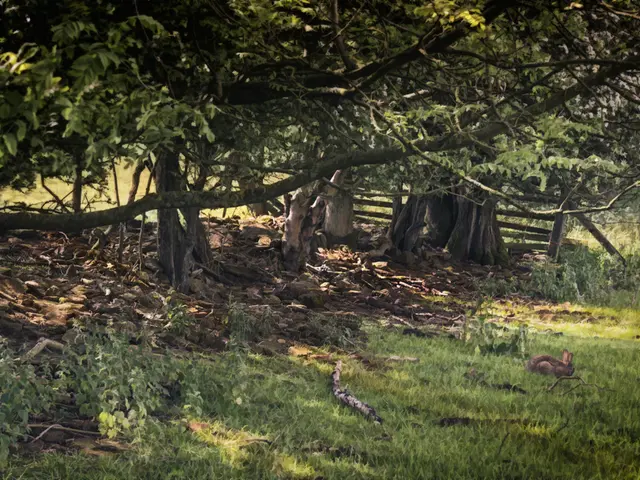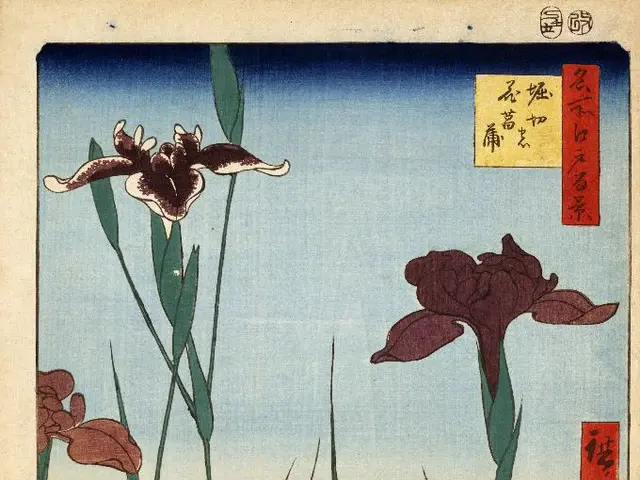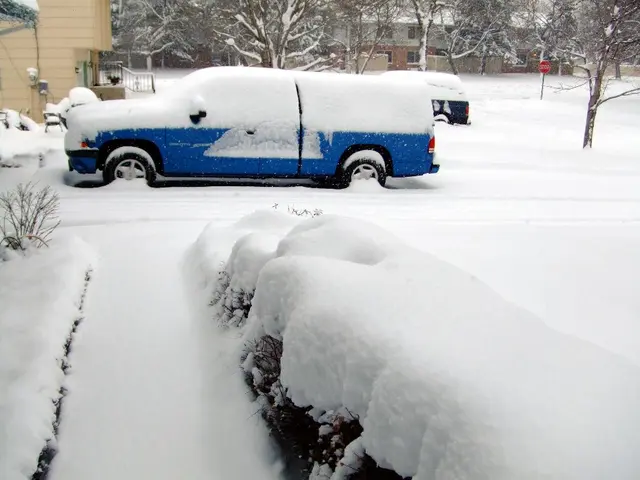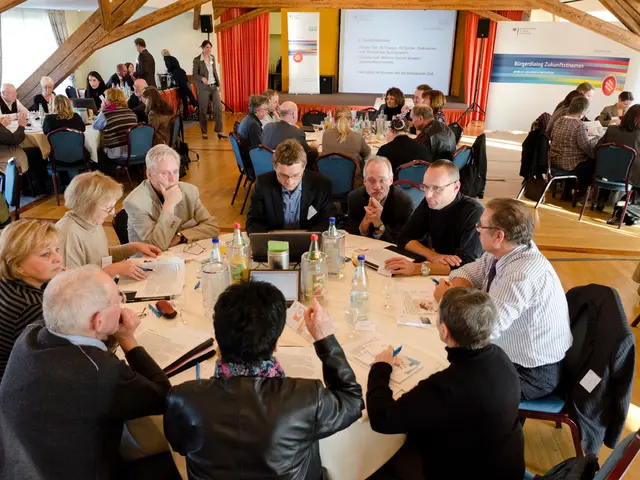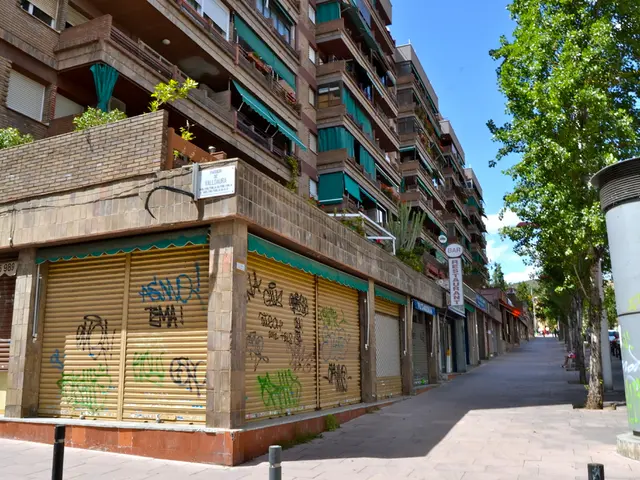Garden Design Red Flags: Subtle Signs Your Garden Setup May Deter Pollinators
Hey there, gardening bud! Creating a welcoming haven for pollinators doesn't have to be a chore. By making a few tweaks to your garden layout, you'll be attracting bees, butterflies, and more to your backyard paradise. Check out these top 18 elements to help your garden absolutely bloom with pollinator-friendly goodness!
Don't Skimp on the Diversity!
Think of your garden like a smorgasbord for pollinators. Start off with a variety of plant species to ensure there's something suitable for their unique preferences. This smorgasbord of nectar and pollen options will help entice different pollinators to check out your garden throughout the year.
Keep Things from Getting Claustrophobic
Overcrowded plants may feel cozy to us humans, but to pollinators, it can be like a maze! Provide enough space between your plants so bees, butterflies, and other critters can effortlessly flutter between them without any trouble. Give each plant room to thrive!
Don't Hide the Goodies!
Pollinators love to be surprised, but they shouldn't have to search high and low for tasty treats! Make sure your flowers are in accessible positions for our buzzing, fluttering friends. Consider planting flowers at varying heights for a “choose your own adventure” experience for these little pollen seekers.
Break Down the Barriers
Tall fences, walls, or other obstacles can make it difficult for pollinators to traverse your garden. Incorporate gaps or use more natural, open boundaries to make it easier for these vital pollinators to enter and exit your garden.
Don't Forget the Fruit and VeggieBuffet
A garden that focuses solely on ornamental flowers may overlook some essential food sources for our pollinator pals. Add some fruit and vegetable crops to the mix! These crops often come with bonus flowers that will further attract bees, butterflies, and more to your garden.
Time for a Refreshing Sip!
In addition to yummy nectar, pollinators need water too! Add a water feature like a birdbath, pond, or shallow puddle to keep your pollinator guests refreshed and well-hydrated during their visit.
Check the Shade Levels
While some plants enjoy some shade, too much can interfere with the growth of flowering plants that pollinators love. Evaluate the sunlight patterns in your garden and ensure that there are areas where flowering plants can grow and bloom in full sunlight.
Show Some Local Love
Native plants are like superheroes of the gardening world! These hardy plants are well-adapted to your local ecosystem and provide a familiar and abundant food source for native pollinators. Embrace your local green superheroes!
Timing is Everything
Try to create a continuous blooming schedule by planting flowers that bloom at different times throughout the year. This way, the feast for the pollinators is nevermore!
Choose Your Chemicals Wisely!
While pesticides can help combat pesky garden invaders, they can also be harmful to our winged helpers. Be mindful of the pesticides you use, or opt for organic alternatives to keep your pollinator friends safe.
Mind the Hardscaping
Hardscaping elements like stones, gravel, and paved paths can take up valuable space that could be better used for pollinator-friendly plants! Strike a balance between green space and hardscaping to make the most of your garden for both yourself and our buzzing buddies.
Add Some Groundcover
For ground-nesting pollinators, like certain species of bees, having bare or lightly covered soil is crucial. But a garden that's completely covered in mulch or hardscaping can drive these pollinators away. Leave some areas of your garden more natural to provide cozy nesting spots for these essential pollinators.
Establish a Garden Ecosystem
By planting flowers that bloom in the spring, summer, and fall, you'll create a steady food source for pollinators throughout the year. As an added bonus, this will help support your garden ecosystem and attract a variety of pollinators.
Cozy Corners for R&R
Pollinators need places to rest, especially on those long, sunny days. Build birdhouses, create shrubbery, or plant dense flower beds with lots of leaves for these little guys to take a break and recharge. The more cozy spots, the merrier!
Get Desert-y!
In dry climates or areas with limited water sources, succulent and cactus plants can be a lifesaver for pollinators. Their nectar-rich flowers attract specific pollinators, such as bees and hummingbirds, and can help support your garden ecosystem even in the most arid conditions.
Don't Ignore Those Night Owls!
While bees and butterflies might be the first pollinators that come to mind, don't forget about nocturnal pollinators like moths and bats! Keep your garden illuminated with low-level, warm lighting to attract these mysterious pollinator pals at night.
Be Mindful of Predators
While many insects play a part in pollination, some can also be natural predators of pollinators. Be wary of plants that attract large numbers of predators, or consider shielding certain sections of your garden to keep pollinators safe from unwanted visitors.
Manage Your Garden Regularly
To keep your garden in tip-top shape for pollinators, stay on top of occasional weed maintenance and make sure to manage any overgrowth effectively. This will help maintain a healthy environment for both your plants and pollinators.
By incorporating these pollinator-friendly features into your garden, you'll be cultivating an accessible, thriving habitat for a variety of pollinators and supporting the overall health of the ecosystem. So go on—start building your pollinator paradise today! For more tips on making your garden even more pollinator-friendly, check out 17 Ways to Attract More Pollinators to Your Garden This Spring. Happy gardening! 🌻🦋
Creating a diverse home-and-garden layout, with a variety of plant species, promotes a welcoming lifestyle for numerous pollinators, as each species may have unique preferences for nectar and pollen.
To ensure that pollinators can easily flutter between plants, keep plants spaced out properly in the garden, creating a more open landscape that helps prevent a claustrophobic effect.

